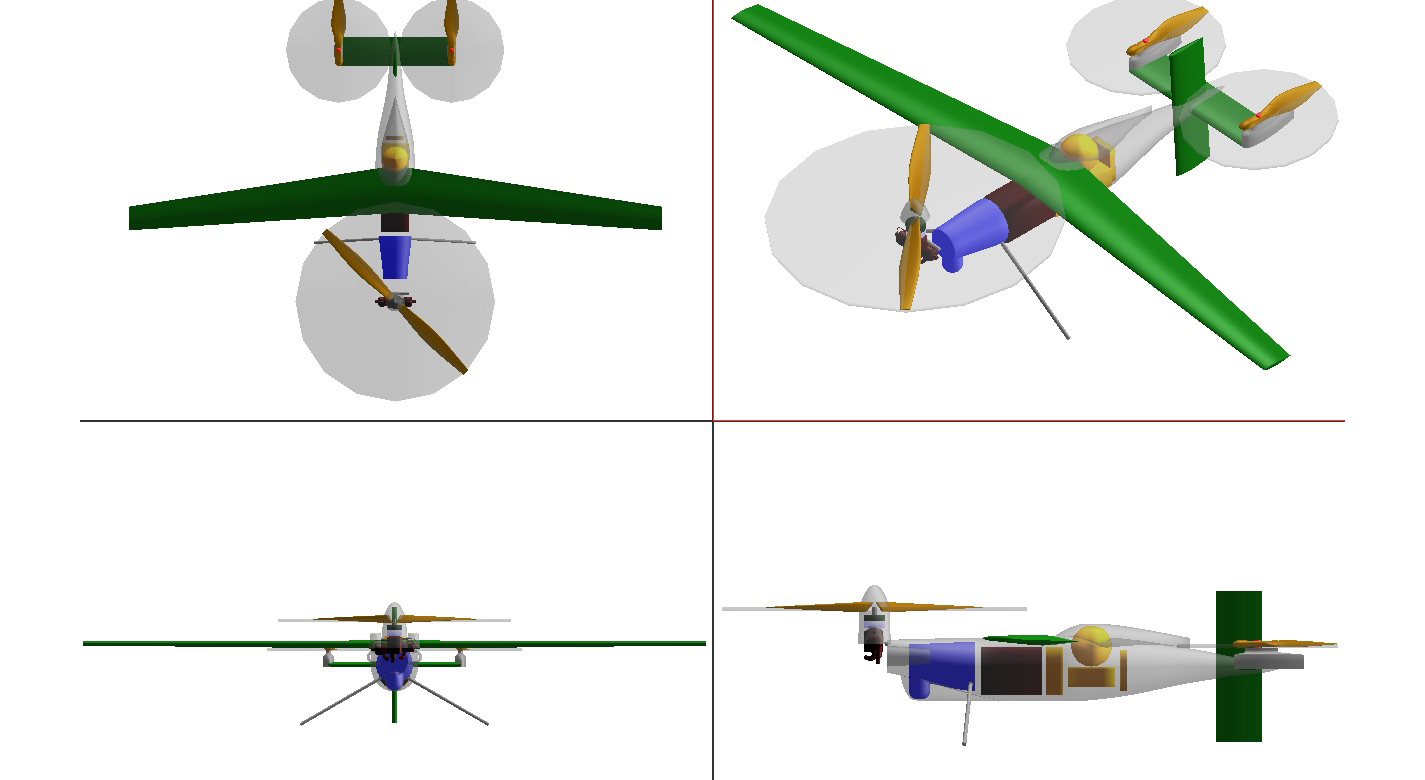Aircraft Vertical Takeoff & Landing
aerospace
Aircraft Vertical Takeoff & Landing (LAR-TOPS-230)
Vertical takeoff UAV enables long endurance missions and is easy to transport
Overview
NASA's Langley Research Center has developed an inexpensive, long endurance vertical takeoff and landing UAV. It is capable of flying for 24 hours, landing in a 50 x 50 zone, and can be loaded into the back of a cargo van for easy transport. In addition, it can land in an either horizontal or vertical flight configuration. The vehicle can be used in any application where UAVs are needed to take off from, or land in, an unprepared landing area.
The Technology
This technology is a vertical takeoff and landing (VTOL) aircraft that is a modification of a conventional single-prop aircraft design. The addition of vertically oriented, stowable tail rotors and an articulating forward rotor, capable of pivoting from a horizontal to vertical orientation, enables VTOL capabilities. It combines the speed and fuel efficiency of fixed wing aircraft with the hoverability and flexibility of rotary aircraft. The VTOL is designed for easy stowing in a cargo van making it easy to transport. The design is expected to avoid the compromises in performance that are typically made in development of VTOL aircraft.

Benefits
- Can take off and land vertically, as a helicopter would, without any support equipment such as a catapult launch or capture nets
- High aspect ratio wings result in 24 hour endurance which is unmatched in the industry
- Longer flights than a helicopter and can land in an either horizontal or vertical flight configuration
Applications
- Military applications such as intelligence, surveillance, and reconnaissance
- Commercial applications where extended mission UAV capabilities are beneficial, including law enforcement, firefighting, crop surveys, pipeline surveys, or oil field management
|
Related Links:
|
Similar Results

VTOL UAV With the Cruise Efficiency of a Conventional Fixed Wing UAV
The core technology that enables the Greased Lightning UAV is the aerodynamic efficiency it achieves in its cruise configuration. Electric motors at each propeller negate the need for drive shafts and gearing which enables this Distributed Electric Propulsion (DEP) aircraft configuration. The design is intended to utilize a hybrid electric drive system that includes small diesel engines which drive alternators to power the electric motors and to charge an on-board battery system. The batteries provide the power boost needed for VTOL and hovering. Numerous other novel design elements are incorporated, such as folding propellers to minimize drag when not in operation, such that the propulsive efficiency can be nearly ideal at both hover and wing borne flight conditions.

Low Weight Flight Controller Design
Increasing demand for smaller UAVs (e.g., sometimes with wingspans on the order of six inches and weighing less than one pound) generated a need for much smaller flight and sensing equipment. NASA Langley's new sensing and flight control system for small UAVs includes both an active flight control board and an avionics sensor board. Together, these compare the status of the UAVs position, heading, and orientation with the pre-programmed data to determine and apply the flight control inputs needed to maintain the desired course.
To satisfy the small form-factor system requirements, micro-electro-mechanical systems (MEMS) are used to realize the various flight control sensing devices. MEMS-based devices are commercially available single-chip devices that lend themselves to easy integration onto a circuit board. The system uses less energy than current systems, allowing solar panels planted on the vehicle to generate the systems power. While the lightweight technology was designed for smaller UAVs, the sensors could be distributed throughout larger UAVs, depending on the application.

Aerodynamically Actuated Thrust Vectoring Device
The thrust actuating device includes several innovations in the aerodynamically stable tilt actuation of propellers, propeller pylons, jets, wings, and fuselages, collectively called propulsors. The propulsors rotate between hover and forward flight mode for a tilt-wing or tilt-rotor aircraft. A vehicle designed using this technology can transition from a hovering flight condition to a wing born flight condition with no mechanical actuation and can do so without complex control systems. This results in a reduction in system weight and complexity and produces a robust and naturally stable hovering aircraft with efficient forward flight modes.

Safe2Ditch Technology
Safe2Ditch is a crash management system that resides on a small processor onboard a small Unmanned Aerial Vehicle (UAV). The system's exclusive mission is emergency management to get the vehicle safely to the ground in the event of an unexpected critical flight issue. It uses the remaining control authority and battery life of the crippled vehicle in an optimal way to reach the safest ditch location possible. It performs this mission autonomously, without any assistance from a safety pilot or ground station. In the event of an imminent crash, Safe2Ditch uses its intelligent algorithms, knowledge of the local area, and knowledge of the disabled vehicle's remaining control authority to select and steer to a crash location that minimizes risk to people and property. As it approaches the site, it uses machine vision to inspect the selected site to ensure that it is clear as expected.

Vertical Take Off and Landing (VTOL) Aircraft with Vectored Thrust for Control and Continuously Variable Pitch Attitude in Hover
The aircraft operates by vectoring the thrust of three independent rotors (propellers). In addition, the vehicle can operate with only thrust vectoring and motor speed control to maintain vehicle attitude in hover and forward (wing born) flight. No other means of vehicle attitude control is required (i.e. ailerons, elevators, rudder), however these additional control surfaces could be added if vehicle control is desired in gliding (non-thrust) conditions.



